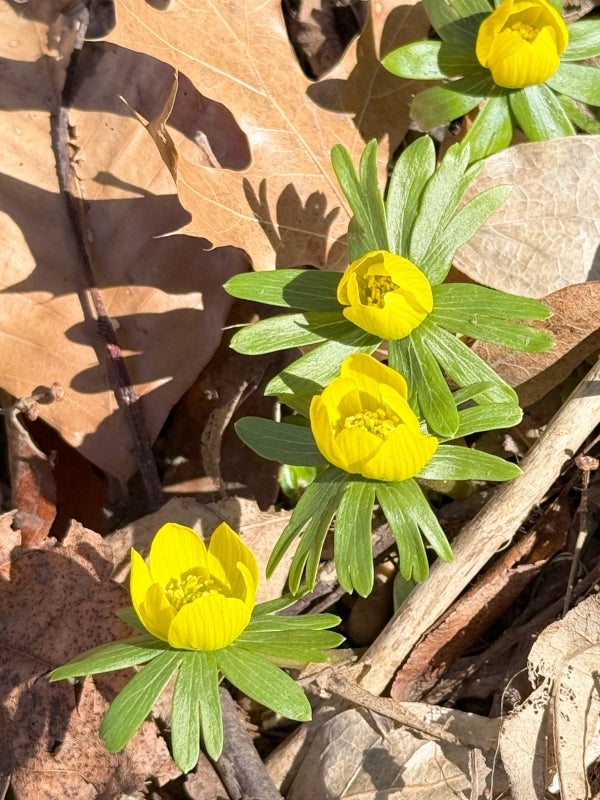What's Up, Buttercup?
Every year, we eagerly await the arrival of winter aconites. These dainty flowers portend the end of winter and the approach of spring. Their cheerful, cup-shaped yellow blossoms can brighten even the dullest of winter days. Winter aconites, part of the buttercup family (Ranunculaceae), aren’t actually bulbs—they're tubers, which are modified fleshy stems that persist underground (think potatoes). Every late winter, they push their flowers up on tiny leafy stalks, sometimes even through the snow, to let us know it's time for the seasons to change.
To make things a bit confusing, there are actually two species that can be called winter aconite: Eranthis hyemalis and Eranthis cilicica. E. hyemalis is a plant native to Europe, with a range that stretches from southern France through the Balkans and into Bulgaria. E. cilicica is a separate but closely related species from the Middle East, with a range that extends from southern Turkey through Syria and into western Iran. Despite their close geographical proximity, there are a few easy ways to distinguish between the two species. E. hyemalis has a coarser leaf texture and blooms earlier. E. cilicica has a much more finely dissected leaf texture and blooms a bit later.

A commonly confused relative of winter aconite is the Amur adonis or pheasant’s eye (Adonis amurensis). Like winter aconite, the Amur adonis is a tuberous member of the buttercup family. However, Amur adonis is native to Japan, China, Korea, and parts of Siberia. It blooms in late winter with yellow, cup-shaped flowers. Amur adonis can be distinguished from winter aconite by its leaf texture; it has extremely dissected leaves with a feathery, fern-like appearance. Additionally, Amur adonis flowers are larger and sit on a leafless stalk, while winter aconite flowers are smaller and perch on a fringe of green leaves.

No matter how you identify them, these early spring-blooming members of the buttercup family are truly delightful. Their vibrant yellow flowers and unique leaf textures bring a touch of cheer and beauty to the winter garden.